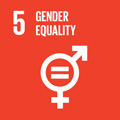- Docente: Salvatore Cosentino
- Credits: 6
- SSD: L-FIL-LET/07
- Language: Italian
- Teaching Mode: In-person learning (entirely or partially)
- Campus: Bologna
-
Corso:
Second cycle degree programme (LM) in
Archaeology and Cultures of the Ancient World (cod. 8855)
Also valid for Second cycle degree programme (LM) in Philology, Literature and Classical Tradition (cod. 9070)
Learning outcomes
The course aims at conveying to the student the knowledge of mentality and values of the Byzantine society, as well as the evolution of its social structure and features of its economic life (landscape and settlements, money, factors of production, distribution and consumption). At the end of the course the students is able to contextualize critically the acquired notions in the framework of the socio-economic history of late antique and medieval Mediterranean. He is able to read specialised literature in at least one foreign language.
Course contents
The course will be divided into two parts:
A) general part dedicated to a historical introduction to the Byzantine world (8 hours).
B) monographic part dedicated to the theme: Arianism, ethnicity and politics in the Byzantine Empire of the Justinian Age (22 hours).
Part A): Introduction to the Byzantine world
This part of the course consists of an introduction to the salient aspects of the Byzantine world. Conceived as a preparatory unit to the contents of the monographic part, it will focus particularly on issues concerning political ideology, the church and monasticism, social values, the army, and the economy in the age between the fourth and ninth centuries.
Parti B): Arianism, Ethnicity and Politics in the Byzantine Empire of the Justinian Age
The Byzantine reconquest of the kingdom of the Vandals (533-534) and the Ostrogoths (535-552) by the Eastern Roman army was followed, from a religious point of view, by the imposition of Catholic orthodoxy on the social fabric of the defeated populations, among whom Arianism was widespread. The aim of the course is to analyse this phenomenon from three different perspectives: firstly, to ascertain whether there is a link between Arianism and what can be generically defined as Vandal or Ostrogothic 'identity'; secondly, to study the ways in which Catholic ecclesiastical institutions replaced the Arian clergy in places of worship and land ownership; thirdly, to analyse the fate of the defeated, Vandals and Ostrogoths, in African and Italic society after the destruction of their political regimes. The main sources for the discussion of these topics, besides Procopius of Caesarea's Bella and some letters of the Collectio Avellana, will be above all the imperial constitutions (especially the novella 37 De Africana ecclesia and the Pragmatica Sanctio pro petitione Vigilii), as well as several Italian papyri (cf. papp. Tjäder 21, 49).
Readings/Bibliography
General Part A)
Mandatory reading of the following texts is required:
― Entry, "Bizantino impero", by A. Carile, in Grande Dizionario
Enciclopedico UTET, III, Torino 1985, pp. 394-405.
― G. Cavallo (ed.), L'uomo bizantino, Roma-Bari 1992.
Monographic Part B)
― All sources will be provided by the lecturer in class;
the reading of the following essays is also required:
― R. Arcuri, “Etnogenesi, ‘entelechia barbarica’, e attuali orientamenti storiografici sulla Völkerwanderungszeit”, in Koinōnia 37 (2013), 107-141.
― S. Cosentino, “The social instability and economic decline of the Ostrogothic community in the aftermath of the imperial victory: the papyri evidence, in J. Herrin, J. Nelson (eds.), Ravenna – Its Role in Early Medieval Change and Exchange, London 2015, 133-149.
― V. Gheller, 'Identità' e 'arianesimo gotico': genesi di un topos storiografico, Bologna 2017, 15-48.
― F. M. Petrini, “Il ‘potere ariano’ in Italia da Ricimero a Totila, in G. A. Cecconi, C. Gabrielli (a cura), Politiche religiose nel mondo antico e tardoantico. Poteri e indirizzi, forme di controllo, idee e prassi di tolleranza, Bari 2011, 339-357.
― U. Roberto, Il secolo dei Vandali. Storia di una integrazione fallita, Palermo 2020, 227-253.
N.B. For non-attending students the following reading is also required:
― E. James, I barbari, trad. it. Mulino, Bologna 2011 (ed. orig. London 2009).
Teaching methods
The course is organised in seminar mode; during the course, the lecturer will translate and comment on some sources (in Greek and Latin). Attendance is therefore strongly recommended.
P.S. Foreign students wishing to attend the course must have a knowledge of Italian of at least level B 2.
Assessment methods
An oral test is required to pass the examination.
This consists of an assessment of the knowledge of part A of the course (general) and a discussion of the contents of part B of the course (monographic).
The final mark for the exam is determined by the following scores: 10/30 for part A) of the course; 20/30 for part B).
Teaching tools
- Translation of written sources.
- Distribution of photocopies.
- Powerpoint presentations.
Office hours
See the website of Salvatore Cosentino
SDGs


This teaching activity contributes to the achievement of the Sustainable Development Goals of the UN 2030 Agenda.
